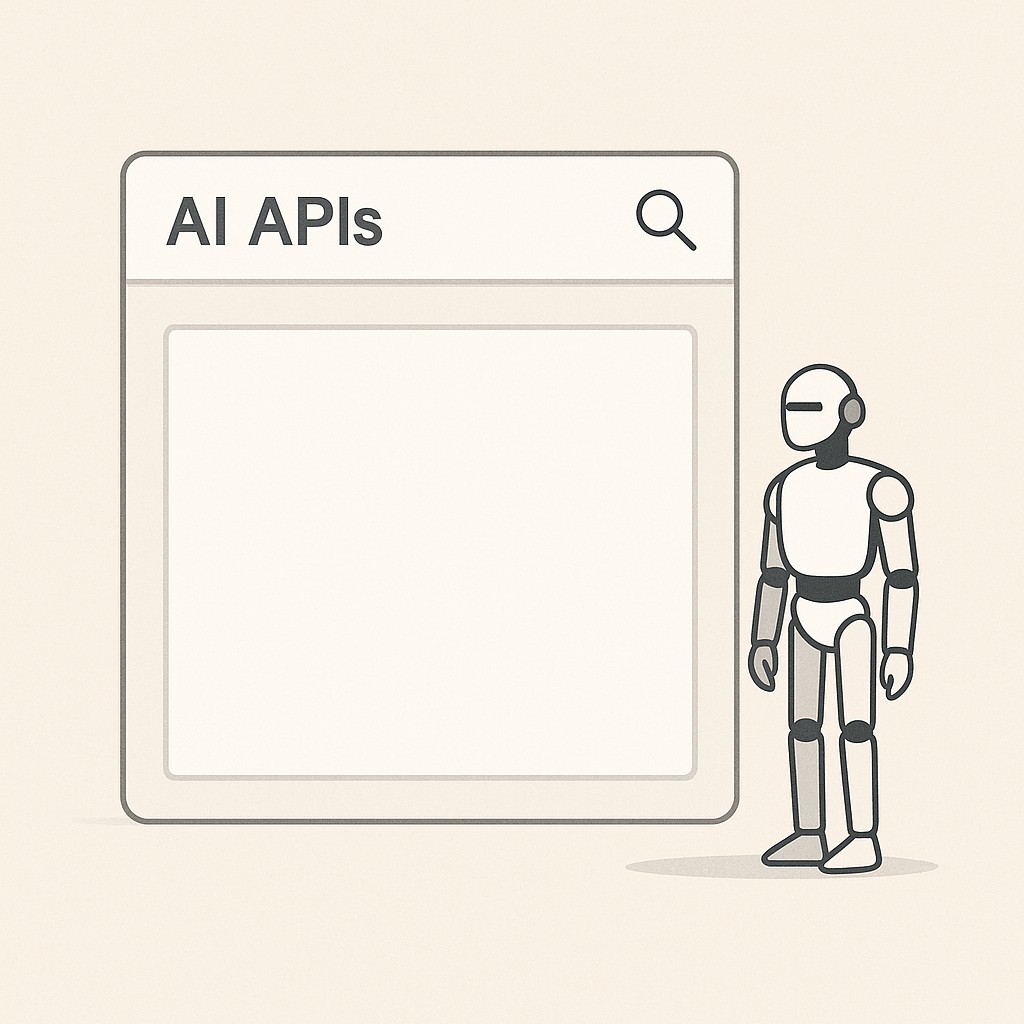API design for AI agents: resilient responses that guide recovery
API design for AI agents: resilient responses that guide recovery

The Search API Dead End (and Why It Shouldn’t Exist)
Let me set the scene. You’re wiring up a developer portal, firing off a query—“AI APIs”—to your backend search. The result: nothing. Not even a polite apology, just an empty list staring back. Progress grinds to a halt. Whatever agent asked that question now sits idle, waiting for a human to jump in and guess what to try next.

That’s the legacy pattern. Classic APIs, the ones many of us have been building for years, see “no results” and just shrug their shoulders. One empty payload, maybe a 200 OK if you’re lucky, and that’s that.
If you’ve shipped production software for a while, you know what comes next. Someone writes glue code to check for nulls, or—more likely—users get stuck, lost in the loop. The old assumption: there’s always a human at the other side, ready to interpret, retry, or bail. When systems return nothing, it’s game over. No one—and nothing—moves forward automatically.
But in this new era, things get interesting. If your API is built with API design for AI agents in mind, “nothing found” isn’t the end. Machines adapt if we give them enough signals and structure. Instead of stalling, an agent can branch out—try a fuzzier search, look in a neighboring category, escalate for help—if the API offers even a small hint. The critical difference? The interface needs to guide recovery, not just declare what went wrong.
This is where resilient APIs make all the difference. You can design endpoints that return context, confidence, and a blueprint for next steps. That’s what lets agents keep moving—and it’s not as tricky as it sounds.
Why Traditional APIs Stall Agent Momentum
I’ve built APIs where an unexpected response kills momentum. You think everything’s solid—it works for the main path—and then—just once—a search for “AI APIs” returns nothing and the client freezes. Whether it’s you watching a dashboard stuck mid-load or one of your agents spinning its wheels, it’s the same feeling. Brief frustration. “Shouldn’t it do something else? Offer a next step?” I remember the sting of pushing builds where the unknown killed the flow. Sometimes those bugs would lurk for ages, waiting to surface when you’re least ready.
It’s because, historically, we built for humans first rather than practicing agent-aware API design. We quietly assume recovery is manual. There’s a null, or a cryptic error, a smidge of context, maybe. We expect a person will scan, guess, and probably turn to Google for a fix. Nulls and 404s are meant as nudges for someone’s attention, not clues for machines to pivot.
But things are shifting. Documentation links in error messages started as a courtesy—a lifeline for developers lost in integration hell. Then I noticed something. Six months ago, I watched an agent actually follow a doc link, reshape its query, and retry. Right there, it became obvious: we’re closer to real autonomous adaptation than most of us think.
What matters is simple: APIs built for AI don’t just report problems—they guide recovery. If the agent is your client, the nuance in your response is the difference between momentum and a dead end.
API Design for AI Agents: Response Patterns That Preserve Agent Autonomy
Let’s talk about what should actually come back from your API when things get weird. At the bare minimum, recovery payloads for self-correcting APIs need four things: context (what just happened), confidence (how sure you are), enumerated alternatives (other options), and next actions with clearly defined preconditions. Context tells the agent what failed, in machine-readable words, so there’s no guessing. Confidence is more than a number—it’s a reason for the agent to try harder or back off. Alternatives should be real pivots, not just “try again”. Next actions, each with condition tags, turn a passive failure into an active checklist. If your agent gets cues like “no results because X; maybe try Y if condition Z”, it can self-correct, not just stall.
A machine-readable URI for the problem type turns errors into recoverable API responses, letting agents fetch details and adapt without manual intervention (RFC guidelines). Drop any of this and you’re betting a person will step in—which isn’t the point.
The old “invalid input” error is a perfect example. It’s a brick wall for agents. No clues, no help, just a deadpan halt. But a good API doesn’t just say “invalid input”. It spells out a fix and leaves the door open.
So instead of an error, you give structured details—a cause (“query has forbidden character”), suggestions (“remove unsupported keywords and resubmit”), and alternatives (“related categories: chat, search, index”). Add in confidence threshold (“80% match if normalized”), and the agent isn’t lost. Yeah, it means more payload complexity. But every extra field is one less hour spent babysitting frozen flows.
The endpoint starts acting more like a helpful guide. Alternatives show up, retries are part of the message, and branching API workflows resolve—all inside your contract. Hypermedia APIs take it further. Clients can follow links for next steps, turning a single endpoint into a small guided journey (HATEOAS pattern). What used to be a one-shot call becomes a loop that keeps agents autonomous.
Keep things simple as you build. Toss in a version field so clients know what to expect. Layer recovery metadata bit by bit—don’t try to overhaul overnight. Always give a sensible fallback, so old clients keep working while new ones flex deeper. It doesn’t take heroics, just a decent habit of leaving signposts.
Recovery-First APIs in Action (and Why I Keep Coming Back)
I’ve spent more time than I care to admit wrestling with search APIs, staring at zero-result screens. The moment I switched my approach—treating endpoints as guides, not judges—things started changing. I stopped tossing up blank lists and started sending back related concepts, low-confidence matches, alternative queries. With tools that show exactly how results get built, agents got something to work with. The payload wasn’t a verdict—it was a path.
It’s strange, but every time my API hands over fallback steps and next-best queries, it feels right. And that’s not just limited to code. The same feeling turns up in odd places—I once lost half an afternoon because my old coffee grinder jammed. Out of habit, I looked for a reset button. No luck, just a tiny sticker that said “try shaking the unit softly”. You wouldn’t find that in a spec, but it worked. I think about recovery cues like that. Sometimes the best systems leave a little hint, even if it’s the smallest nudge. It’s not always elegant, but it keeps you moving.
You get a different kind of trust when the agent spells out its reasoning. Instead of blank screens or silent failures, the agent explains what happened, why it pivoted, and what’s up next. The reroute isn’t hidden—it’s baked into the story. You avoid dead ends, keep users confident the system won’t trap them.
This idea scales. Payments, data workflows, you name it. A rejected payment method? Offer branches, alternative wallets, retry windows. Schema mismatch in a data pipeline? Don’t just fail—return fallback schemas, ask for missing fields, spell out recovery in steps. It’s not about painting over errors. It’s about showing a next step so every process can move on.
Give every endpoint a recovery path and you build systems agents (and humans) actually trust—to keep going, even if something goes sideways.
Turning Dead Ends Into Autonomy: Tackling Time, Compatibility, and Complexity
If you’re looking at your API contracts and feeling wary, I get it. The doubts hit hard: “How long will this really take?”, “Will older clients blow up if payloads change?”, “Does all this recovery logic mean complicated debugging down the line?” These worries are real. I lost a weekend once, patching a legacy endpoint that was fine—until agents started freezing due to poor null response handling. There’s always friction holding tight to the older ways.
But you don’t need a full rewrite. Just sprinkle in a minimal next-best step when nothing is found, or provide a machine-readable cause. Toss a doc link in, enumerate two fallback actions. Version changes so older clients don’t break. Measure how much manual glue code you peel away. You’ll see, even in early steps, that framing cuts down back-and-forth—agents get what they need to iterate, without all the manual recovery.
Over time, API design for AI agents turns momentum-preserving patterns into true autonomy. When endpoints guide recovery, sudden dead stops are rare. Operational friction drops for whole teams and products (here’s one take). The time invested pays back with interest. You end up staring at workflows that keep moving, almost by habit.
For engineers and AI builders who need clean docs and posts, our app generates AI-powered content with editable drafts for blogs, release notes, and product pages, helping you publish faster without fuss.
One thing I still wrestle with: balancing payload complexity and ease-of-use for less sophisticated agents. There’s a sweet spot, but I haven’t quite dialed it in yet. Some endpoints feel smooth, others get tangled. I’ll keep chipping away.
So the invite for next steps is simple. Redesign your contracts, even a little, so agents never stall on “nothing” again. Build the APIs that keep things moving—whatever tomorrow’s client ends up becoming.
Enjoyed this post? For more insights on engineering leadership, mindful productivity, and navigating the modern workday, follow me on LinkedIn to stay inspired and join the conversation.
